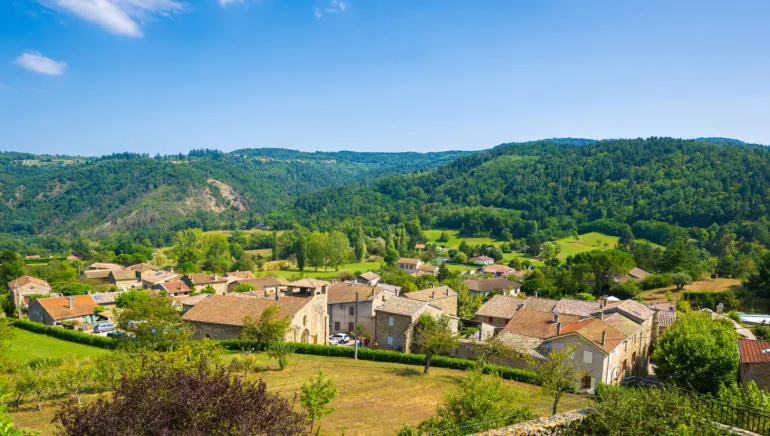Boucieu-le-Roi : a village with outstanding character
In 1291, King Philippe le Bel made Boucieu the seat of a bailliage court, i.e. a royal court of justice covering the entire Haut Vivarais region, and made it a royal town reporting directly to him (hence the name Boucieu-le-Roi). A freehold land until it was replaced by Annonay in 1565, Boucieu-le-Roi's lords were the King and various co-lords.
The village was deeply influenced by Pierre Vigne (1670-1740), a missionary priest from the Vivarais region, whose tomb is in the church. Arriving in Boucieu in 1712, where he decided to stop after seeing topographical similarities with Jerusalem, he founded the Order of the Blessed Sacrament in 1715. His missionary work continues around the world thanks to the Sisters of the Blessed Sacrament, a congregation born in Boucieu-le-Roi. Pierre Vigne was beatified on October 3, 2004 by Pope John Paul II.
Saint-Jean L'évangéliste church: consecrated in 1492, it was partly destroyed during the Wars of Religion (16th century), then restored in the 17th century. All that remains of the original church is the central part of the façade. Blessed Pierre Vigne is buried in the church, which is a place of pilgrimage.
La maison du Bailli: Listed as an Inventaire supplémentaire des Monuments historiques since 1927, this beautiful house with its corbelled turret was the seat of the royal court of justice.
The village was deeply influenced by Pierre Vigne (1670-1740), a missionary priest from the Vivarais region, whose tomb is in the church. Arriving in Boucieu in 1712, where he decided to stop after seeing topographical similarities with Jerusalem, he founded the Order of the Blessed Sacrament in 1715. His missionary work continues around the world thanks to the Sisters of the Blessed Sacrament, a congregation born in Boucieu-le-Roi. Pierre Vigne was beatified on October 3, 2004 by Pope John Paul II.
Saint-Jean L'évangéliste church: consecrated in 1492, it was partly destroyed during the Wars of Religion (16th century), then restored in the 17th century. All that remains of the original church is the central part of the façade. Blessed Pierre Vigne is buried in the church, which is a place of pilgrimage.
La maison du Bailli: Listed as an Inventaire supplémentaire des Monuments historiques since 1927, this beautiful house with its corbelled turret was the seat of the royal court of justice.
Diese Einrichtung ist Accueil Vélo und bietet spezielle Dienstleistungen für Radfahrer an.
Contact par mail
* Pflichtfelder
Ein Problem mit dieser Einrichtung melden
* Pflichtfelder
